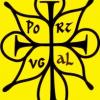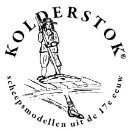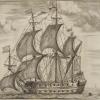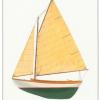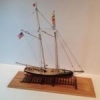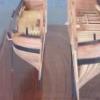Supplies of the Ship Modeler's Handbook are running out. Get your copy NOW before they are gone! Click on photo to order.
×
-
Posts
841 -
Joined
-
Last visited
Reputation Activity
-
 michaelpsutton2 got a reaction from uss frolick in USS Constitution 1844~~46
michaelpsutton2 got a reaction from uss frolick in USS Constitution 1844~~46
Many years ago I got this copy of Pook's Inboard works in 1847 from either the National Archive or the Library of Congress. Maybe it will help. Be careful though, the original was obviously torn and distorted. The quaterdeck ports, and shroud arrangements are different than Ware's sail plan of 1817.
-
 michaelpsutton2 got a reaction from uss frolick in USS Constitution 1844~~46
michaelpsutton2 got a reaction from uss frolick in USS Constitution 1844~~46
All research for the Constitution begins by reading the proper chapter in TG Martin's "Most Fortunate Ship". Then you begin the search for the original sources.
-
 michaelpsutton2 got a reaction from DaveBaxt in Ratline Spacing
michaelpsutton2 got a reaction from DaveBaxt in Ratline Spacing
I would weigh in on the side of the practical. Differences of an inch or two at this scale are not going to be readily discernible.
There is always the internal satisfaction that comes from kn wrong that you have done it right. Or at least as close to right as you can.
But there is no avoiding the fact that soon after finishing any project new information always comes to hand. And it almost always contradicts what you have done
-
 michaelpsutton2 got a reaction from GuntherMT in Ratline Spacing
michaelpsutton2 got a reaction from GuntherMT in Ratline Spacing
I would weigh in on the side of the practical. Differences of an inch or two at this scale are not going to be readily discernible.
There is always the internal satisfaction that comes from kn wrong that you have done it right. Or at least as close to right as you can.
But there is no avoiding the fact that soon after finishing any project new information always comes to hand. And it almost always contradicts what you have done
-
 michaelpsutton2 got a reaction from mtaylor in Ratline Spacing
michaelpsutton2 got a reaction from mtaylor in Ratline Spacing
I would weigh in on the side of the practical. Differences of an inch or two at this scale are not going to be readily discernible.
There is always the internal satisfaction that comes from kn wrong that you have done it right. Or at least as close to right as you can.
But there is no avoiding the fact that soon after finishing any project new information always comes to hand. And it almost always contradicts what you have done
-
 michaelpsutton2 got a reaction from rybakov in Colors on ships
michaelpsutton2 got a reaction from rybakov in Colors on ships
Many people underestimate the part that economics and politics played. I suspect some of the preliminary models were as ornate as possible to raise interest in the project and the prestige of the shipwright. Once the ship was approved, funded, built and in service the navies would then maintain them using the cheapest, plainest paints that could be found on the planet. Many time purchasing from corrupt suppliers who supplied sub par product.
-
 michaelpsutton2 got a reaction from CaptainSteve in Colors on ships
michaelpsutton2 got a reaction from CaptainSteve in Colors on ships
It is my understanding the the Vasa of 1627-8 was intended as a flagship and a prestige vessel. I think you would be safe to assume that both the carvings and the painting were more elaborate than most ships. She was designed from the start to impress.
-
 michaelpsutton2 got a reaction from druxey in Accuracy of AOTS Deck Planking Diagrams
michaelpsutton2 got a reaction from druxey in Accuracy of AOTS Deck Planking Diagrams
In addition to Druxey's absolutely correct observation you have the option of choosing 3 step, 4 step decks or more. I put a patio deck in at my step son's about a month ago and it became a rather warm conversation. We finally agreed to drink on it for a while and the next morning laid the neatest 4 step you could wish for.
The real issue was ending up with rather short bits on some of the ends. Which leads me to the suggestion that you lay out the whole deck before doing anything even slightly permanent
-
 michaelpsutton2 reacted to druxey in Accuracy of AOTS Deck Planking Diagrams
michaelpsutton2 reacted to druxey in Accuracy of AOTS Deck Planking Diagrams
AOTS series often contain errors, unfortunately. The planking pattern you show is one example. The second version is correct. If the first layout were actually used, once one butt gave way, the rest would follow like a zipper. (This particularly applies to hull planking). The second, staggered pattern minimizes this possibility and is much stronger.
-
 michaelpsutton2 got a reaction from uss frolick in What is a topgallant forecastle?
michaelpsutton2 got a reaction from uss frolick in What is a topgallant forecastle?
A topgallant forcastle is a small deck in the bow of a ship. Obviously all forcastles are a small deck in the bow of a ship. It is the uppermost deck.
What makes it a top-gallant forecastle is when it is above the height of the main rail. Usually top-gallant forecastles were added to smaller vessels that did not have any foc'sle at all. On these smaller ships (brigs & sloops etc) the bulwarks were not tall enough to provide the minimum acceptable head room under a deck. Therefore an addition was added to the height of the sides. If you examine the print of the HMS Nautilus you will see the addition to the sides from the stem to about the last lower shroud. She began life as a typical Cherokee class 10 gun brig. This vary large class of brigs were generally flush decked. This ship had a top-gallant foc'sle added later in life. It may have been to provide an additional covered space. Maybe a platform was needed to get the sailors handling the head sails away from the crew handling the anchor cables.
-
 michaelpsutton2 got a reaction from *Hans* in Batavia by *Hans* - FINISHED
michaelpsutton2 got a reaction from *Hans* in Batavia by *Hans* - FINISHED
A great model and your build log has provided the chance to see some great conversation on Dutch practice which I know so little about.
-
 michaelpsutton2 got a reaction from CaptainSteve in Copper plated ships in NMM
michaelpsutton2 got a reaction from CaptainSteve in Copper plated ships in NMM
Try these links for pic's of weathered copper:
http://www.modelexpo-online.com/album.asp?a=Thomsen_USS-Constitution
http://cs.finescale.com/fsm/modeling_subjects/f/7/t/68621.aspx?sort=DESC
-
 michaelpsutton2 got a reaction from trippwj in The Masting of American Merchant Sail in the 1850s: An Illustrated Study
michaelpsutton2 got a reaction from trippwj in The Masting of American Merchant Sail in the 1850s: An Illustrated Study
This one is a must for anyone building the Flying cloud or any of the American clipper ships.
-
 michaelpsutton2 reacted to trippwj in The Masting of American Merchant Sail in the 1850s: An Illustrated Study
michaelpsutton2 reacted to trippwj in The Masting of American Merchant Sail in the 1850s: An Illustrated Study
I had not seen that this one came out - looks like it may be an interesting addition to my library!
The Masting of American Merchant Sail in the 1850s: An Illustrated Study
William L. Crothers – July 2014
Paperback: 188 pages
Publisher: McFarland (July 31, 2014)
Language: English
Print ISBN: 978-0-7864-9399-9
Ebook ISBN: 978-1-4766-1569-1
57 illustrations, 2 maps, appendix, glossary, bibliography, index
188pp. softcover (8.5 x 11)
This book describes the intricacies of the construction and fabrication more than 150 years ago of masts and yards installed in American merchant vessels, particularly those spars which were "built" or composed of multiple pieces bound together by iron bands. These were referred to as "made" spars as opposed to spars constructed from a single tree. It also contains instructions for developing the shape and proportions of various spars. Very little information is available on this subject. Generally, the external sizes of individual spars can be found but intimate details are sorely neglected. In addition, the book includes the spacing and location of masts in a ship, and the rake, and it discusses the types of wood that are most desirable in the construction of spars.
Table of Contents
Acknowledgments vi
Preface 1
Introduction 3
Alphabetical List of Vessels 6
Chronological List of Vessels 10
Part I. How Masts and Spars Were Constructed
1. The Evolution of Masts and Spars for the Square Rigged Vessel 25
2. Timber Used in Mast Making 32
3. Harvesting, Storage and Preservation of Timber 34
4. Proportions of Masts and Spars 41
5. A Single Tree Mast and Bowsprit 52
6. Made-Masts and Made-Bowsprits 57
7. Upper Masts 75
8. Yards 82
9. Booms and Gaffs 92
Part II. Masting Arrangements
10. Location and Rake of Masts 99
11. Spar Plans of American Merchant Sail in the 1850s 103
12. The Spar Makers 124
Appendix: Masting Tables for Categories of Vessels Included in This Book 127
Glossary 173
References 177
Index 179
Publisher website: http://www.mcfarlandbooks.com/book-2.php?id=978-0-7864-9399-9
-
 michaelpsutton2 got a reaction from pete48 in VOLVO OCEAN RACE Open 70 By Pete48 - FINISHED - Scale : 1/4" = 1' - 0"
michaelpsutton2 got a reaction from pete48 in VOLVO OCEAN RACE Open 70 By Pete48 - FINISHED - Scale : 1/4" = 1' - 0"
When the time comes please post plenty of pic's on how to lay out the hull graphics!
-
 michaelpsutton2 got a reaction from JerseyCity Frankie in Making sails for HMS Victory
michaelpsutton2 got a reaction from JerseyCity Frankie in Making sails for HMS Victory
I recently borrowed this book from the library.
Period ship Modeling: an illustrated masterclass: the Building of the American Privateer Prince de Neufchatel by Phillip Reed.
In it he shows how to make remarkable small scale sails from tissue dipped in diluted paint.
-
 michaelpsutton2 reacted to JerseyCity Frankie in what does a stuns'l boom do?
michaelpsutton2 reacted to JerseyCity Frankie in what does a stuns'l boom do?
Hi Ian. Stunsails (spelled Studdingsails) are supplementary sails that can be set on either side of the square sails. The booms you mention could be slid outboard through iron rings attached to the yards well past the ends of the yardams. On these extensions smaller square sails could then be spread, giving the effect of more canvas on each yard. Here is an excellent recently posted photo of them in use on the the Europa which makes their disposition plain. Studdingsails were only set in light airs with the wind abaft the beam.
Most of the time the booms were not in use and they were positioned inboard, which is how they are usually depicted on models. The canvas on them was "flown" up to them from the deck, not furled on them at all when not in use. The sails could be set as needed and not necessarily all at the same time nor even symmetrically- you could set the portside ones but not the starboard ones, or even set the ones to port on some yards and ones to starboard on others. All depending on the wind.
-
 michaelpsutton2 got a reaction from _SalD_ in Phantom by _SalD_ - FINISHED - 1/8" scale
michaelpsutton2 got a reaction from _SalD_ in Phantom by _SalD_ - FINISHED - 1/8" scale
The phantom model is on my shelf as the next project. I am saving this thread as an inspiration
-
 michaelpsutton2 got a reaction from justsayrow in ratlines,tarred or not?
michaelpsutton2 got a reaction from justsayrow in ratlines,tarred or not?
I always thought the shrouds themselves were "wormed parcelled, served & tarred". Particularly on vessels with larger diameter rigging.
The ratlines were left natural.
-
 michaelpsutton2 reacted to JerseyCity Frankie in ratlines,tarred or not?
michaelpsutton2 reacted to JerseyCity Frankie in ratlines,tarred or not?
I have a history of doing maintenance work on historic sailing ships and I have painted on a fair amount of pine tar in my day. Landlubbers often think the tar we talk about when we talk about Tar is asphalt tar, a not too good smelling petroleum industry byproduct used in road maintenance on land. Easy to mistake it with Pine Tar if you don’t use your nose since the two products are shiny black and gloopy. But those of us who use Pine Tar on ships all agree it’s the most lovely smelling substance, perhaps in all the world. Some even say its an aphrodisiac.
But I digress.
Traditional pine tar is made by heating the roots of pine trees in the absence of oxygen, which produces charcoal and pine tar. http://en.wikipedia.org/wiki/Pine_tar and this nice essay on tar is worth a look too: http://www.maritime.org/conf/conf-kaye-tar.htm
Nobody on modern tall ships paints tar on their ratlines, but neither do modern sailing vessels use natural fiber line as ratline stuff. Unlike natural fiber line, modern Dacron line is impervious to rot and requires no coatings. But natural fiber line can last longer in a marine environment if its painted or impregnated with tar.
Tar can and often should be cut with turpentine or linseed oil or both, this allows it to flow better and penetrate the fibers of a rope. Full strength unadulterated tar has the consistency of molasses and appears black and is very gloppy. Its not really pigmented and if painted onto a white nonporous surface it will appear to be a streaky dark brown film, it will not behave like black paint which has pigment particles suspended in it and will thus “cover” the same white surface the tar would only smear.
Also the paint will dry in a day while the tar remains very sticky for quite a long while, it remains sticky for weeks. Repeated applications of tar will eventually produce a thick black opaque coating and this is why shrouds and standing rigging is black, they have many coats of tar applied to them eventually leading to a hard shell of tar which keeps the water out and the Ultraviolet Radiation can’t penetrate. Despite modern man-made-fiber lines imperviousness to rot, it still can be harmed by U.V. radiation and this is why it is sometimes tarred but I have read that black paint is often used on modern ships in place of tar since it performs the same U.V. blocking function, LOOKS like tar and is also universally available while Pine Tar can be hard to come by in our modern age. But back in the old days Pine Tar was ubiquitous. Today small quantities are available at tack shops for the horse riding trade.
If you paint Pine Tar on canvas (which I tried once) it turns the fabric an olive drab color and makes it heavy and waterproof and this is where we get Tarpaulin. Paint it on manila line and it darkens it slightly but not so much that you would tell the difference right away between a painted and unpainted piece of line. Put four coats on manila and you will certainly see the color shift to a darker hue but nowhere near black, the line now fairly waterproof and very sticky.
Getting finally to the point, the long way, I am sure pine tar was painted on ratlines. Also I am sure pine tar was already in the rope when it arrived at the ship, having been applied at the ropewalk in a thinned solution or rubbed on with a rag to produce a coating that would penetrate the fibers and add to the lines longevity. But I don’t think it would have been applied in thick enough or repeated coatings sufficient to make the ratlines black. I imagine the bo’sun would have thin tar applied to the ratlines whenever they started to appear dry or took on a chalky chaffed appearance but I do not know that for a fact, I just surmise it from my own experience.
-
 michaelpsutton2 got a reaction from geoff in ratlines,tarred or not?
michaelpsutton2 got a reaction from geoff in ratlines,tarred or not?
I always thought the shrouds themselves were "wormed parcelled, served & tarred". Particularly on vessels with larger diameter rigging.
The ratlines were left natural.
-
 michaelpsutton2 got a reaction from Meriadoc Brandybuck in review sloop of war
michaelpsutton2 got a reaction from Meriadoc Brandybuck in review sloop of war
As I said in my own review a fine book and a welcome addition to my shelf. I will positively purchase any future volume in the series. So many other books seemed focused on the larger units of the fleet.
It would have been nice if there had been at least one example of the "brigantine rig" in the chapter on masting and sail plans. Also the tables of spar dimensions that were calculated by the author from Steel were at best put in the next volume and at worst unnecessary as anyone could generate those for him or herself.
As always I wish that the plans did not straddle the gutter between pages.
-
 michaelpsutton2 got a reaction from dgbot in review sloop of war
michaelpsutton2 got a reaction from dgbot in review sloop of war
As I said in my own review a fine book and a welcome addition to my shelf. I will positively purchase any future volume in the series. So many other books seemed focused on the larger units of the fleet.
It would have been nice if there had been at least one example of the "brigantine rig" in the chapter on masting and sail plans. Also the tables of spar dimensions that were calculated by the author from Steel were at best put in the next volume and at worst unnecessary as anyone could generate those for him or herself.
As always I wish that the plans did not straddle the gutter between pages.
-
 michaelpsutton2 got a reaction from JerseyCity Frankie in Constitution. Mystery rigging in top
michaelpsutton2 got a reaction from JerseyCity Frankie in Constitution. Mystery rigging in top
Interesting! I have emailed the Constitution Museum. I will let you know what they have to say.
-
 michaelpsutton2 got a reaction from WackoWolf in scroll saw troubles
michaelpsutton2 got a reaction from WackoWolf in scroll saw troubles
He was talking about the spiral blade. He claims that he has more control than with straight blades. He does say that the spiral blades remove moe material so that you have to be more aware of what side of the lines you cut to.






